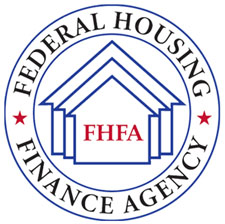 This past summer, Edward DeMarco, director of the Federal Housing Finance Agency (FHFA), announced that the FHFA was considering reducing the maximum size of the loans that government-sponsored enterprises (GSEs) Fannie Mae and Freddie Mac guarantee, in an effort to help infuse more private capital into the housing finance system and reduce the GSEs' footprint.
This past summer, Edward DeMarco, director of the Federal Housing Finance Agency (FHFA), announced that the FHFA was considering reducing the maximum size of the loans that government-sponsored enterprises (GSEs) Fannie Mae and Freddie Mac guarantee, in an effort to help infuse more private capital into the housing finance system and reduce the GSEs' footprint.
That announcement – as well as one President Barack Obama gave over the summer, in which he specifically endorsed a gradual reduction in maximum loan size – led to considerable backlash from the Mortgage Bankers Association (MBA), National Association of Realtors (NAR) and other industry groups, which argued that reducing loan limits could potentially harm both home buyers and lenders, by creating un-due complexity, thus disrupting the housing market recovery.
However, in a speech he made in October during the MBA's 100th Annual Conference & Expo in Washington, D.C., DeMarco helped allay those concerns when he announced that, moving forward, the FHFA would provide all market participants with at least six months' notice before making any adjustments to the GSEs' loan limits.
Further, he said, ‘Any reduction would be across the board, not just in some parts of the country. And, consistent with our practice when increasing guarantee fees, any change would be measured and gradual so as not to disrupt markets.’
Therefore, it should come as no surprise that the FHFA this month announced that loan limits for Fannie Mae and Freddie Mac would remain unchanged for the coming year.
In a press release issued Tuesday, the FHFA said the maximum conforming loan limits for mortgages acquired or guaranteed by the GSEs would remain at $417,000 for single-unit properties. In addition, the special maximum loan limit for ‘higher-cost’ areas of the country would remain at $625,000, the agency announced.
Loan limits are typically changed each year according to a formula that takes into account median prices in local areas; however, they have been unchanged for several years because of regulations put in place in response to the housing crisis.
In a statement, Steve Brown, president of NAR, applauded the FHFA's decision.
‘NAR opposes lowering the ceiling on loans eligible for backing by the government-sponsored enterprises,’ Brown said. ‘Lower loan limits would increase costs for consumers and reduce their access to conventional mortgages.’
Brown noted that when DeMarco indicated in September that the FHFA was considering lowering the limits, ‘NAR cautioned that such an experiment would jeopardize homeownership for many creditworthy buyers, especially first-time home buyers who are often less likely to meet the 20 percent minimum down payment requirement.’
‘There is already enough turbulence in the regulatory environment for mortgage lending,’ Brown said. ‘In January 2014, many changes stemming from the Dodd-Frank Act will go into effect, including the ability-to-repay requirement. In addition, risk retention regulations remain in flux, including the definition of a qualified residential mortgage. Lowering loan limits at this time would create even more confusion and uncertainty, and we would run the risk of reversing the progress that's been made in the economic recovery.’
To access a spreadsheet with a county-by-county breakdown of the current loan limits, click here.











